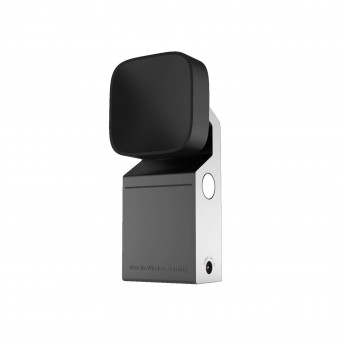Wise Wireless Sensor by Yihong Qi and Alex Qi |
Home > Winners > #123250 |
 |
|
||||
| DESIGN DETAILS | |||||
| DESIGN NAME: Wise PRIMARY FUNCTION: Wireless Sensor INSPIRATION: Advances in science and technology empower humanity, health, and longevity; however, today's tools cannot decipher human vitality and behavior. Mercku leverages advanced artificial intelligence and hardware to connect things and environments to people, unlocking a truly connected IoT ecosystem. Innovations into eliminating internal interference, environmental noise, and robust system designs enable devices to measure nearby vitals without wearables, completing a proper machine-human integration. UNIQUE PROPERTIES / PROJECT DESCRIPTION: Wireless Intelligence Sensing (WISe) combines unique hardware and computing breakthroughs to accurately measure heartbeat, breath rates, and vital signs without wearables. Innovations include minimizing wireless interference, fitting seven antennas in a coin-sized space. Cutting edge computation isolates sensor signals from environmental noise and measures minuscule rhythms like heartbeats, non-intrusively, from meters away. OPERATION / FLOW / INTERACTION: Embedded into existing or new products, WISe unlocks vital sensing capabilities automatically, without user intervention. In a car, WISe can scan for security intrusions, measure driver health and detect children. In the home, WISe can make any product vital-sensitive. The sensor is embedded as a component at the manufacturing level. PROJECT DURATION AND LOCATION: WISe development started in 2017 in Waterloo, Canada, and the first commercial product became available in September 2020. Currently, WISe integration occurs in the automotive and smart home industries. FITS BEST INTO CATEGORY: Product Engineering and Technical Design |
PRODUCTION / REALIZATION TECHNOLOGY: The three-step design captures data, synthesizes information, and accumulates knowledge. Hardware innovations, including industry-leading antenna systems, accurately capture human data. Then, proprietary software algorithms turn data into information and distinguish human behavior. Lastly, advanced AI and machine learning computation build models to understand human behavior, enabling early disease detection and empowering a human-machine ecosystem. SPECIFICATIONS / TECHNICAL PROPERTIES: The sensor can fit in existing products, automobiles, and electronic devices. The size is flexible, and the antenna array can be adapted to fit unique implementations and environments. The standalone sensor measures 4cm x 4cm and has a 2mm width. Leveraging mmWave frequency, particularly 60GHz, this sensor can achieve near-perfect results up to 3m. Beyond that, the sensor can cover multiple rooms for presence detection capabilities. TAGS: Wireless, Sensing, Mercku, WISe, Connectivity, Automotive, Healthcare, Sensor RESEARCH ABSTRACT: The research focused on three main areas. Hardware research and advancements protected by intellectual capital delves into internal system noise reduction and maximized antenna gain, resulting in industry-leading hardware performance. Software algorithms remove environmental noise to obtain precise measurements of the intended subject(s). Lastly, proprietary artificial intelligence enables learnings to decipher information into discernable health and presence insights. CHALLENGE: The biggest challenge is overcoming the system interference to obtain valuable vital data without wearables. Using RADAR, measuring airplanes in the sky is complex, but measuring something as small as a heartbeat, even under clothing, is exponentially more complicated. Internal system noise improves upon Nobel Prize-winning theories to minimize all system noise, to achieve wireless vital measurement. Currently, this solution boasts industry-leading accuracy due to breakthroughs in physics. ADDED DATE: 2021-03-07 21:00:32 TEAM MEMBERS (4) : Yihong Qi, Alex Qi, Yunlong Luo and Ge Shi IMAGE CREDITS: Mercku Inc. PATENTS/COPYRIGHTS: Mercku Inc. |
||||
| Visit the following page to learn more: http://www.mercku.com | |||||
| AWARD DETAILS | |
 |
Wise Wireless Sensor by Yihong Qi and Alex Qi is Winner in Product Engineering and Technical Design Category, 2020 - 2021.· Press Members: Login or Register to request an exclusive interview with Yihong Qi and Alex Qi. · Click here to register inorder to view the profile and other works by Yihong Qi and Alex Qi. |
| SOCIAL |
| + Add to Likes / Favorites | Send to My Email | Comment | Testimonials | View Press-Release | Press Kit |







